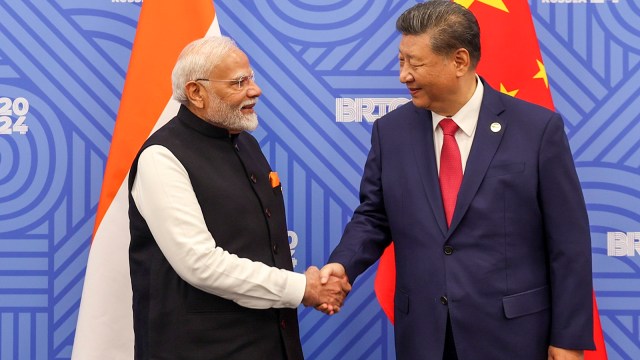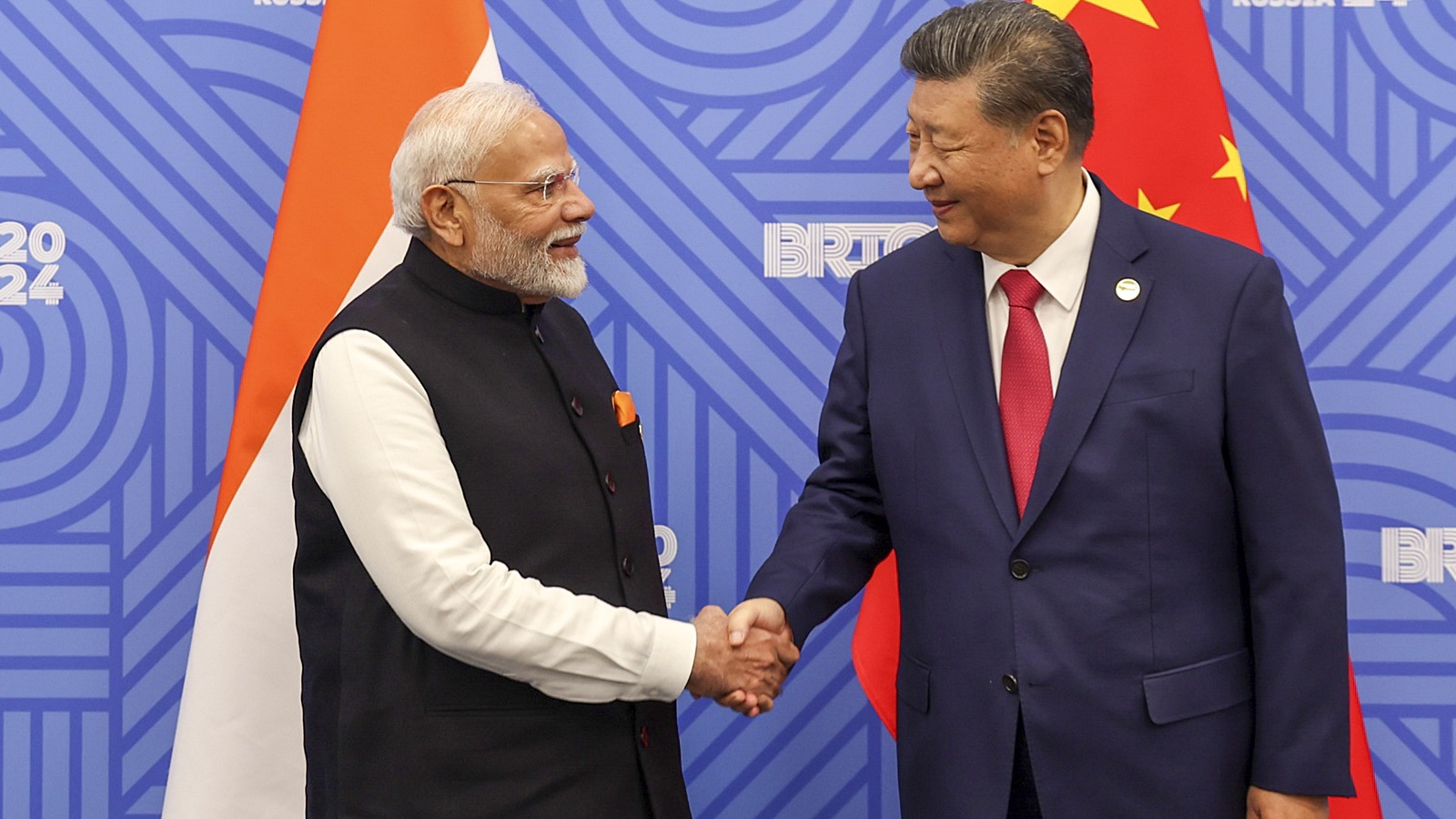
The 16th BRICS Summit concluded on October 23 with a happy ending. Every member state will have something to show on its report card. Russian President Vladimir Putin, ostracised by the West, can claim to have successfully hosted a summit in which the leading states of the Global South enthusiastically participated. Prime Minister Narendra Modi and China’s President Xi Jinping may assert that they restored normalcy in Sino-Indian ties following the agreement on border patrolling and disengagement. The leaders of the new entrants must be equally upbeat with having acquired a seat in a privileged non-Western club. The Kazan Declaration, issued at the end of the Summit, touches on practically every salient issue: It reiterates the demand for equitable global governance, advocates restoring peace through dialogue, and encourages cooperation among countries of the Global South. The Declaration is high on expression of intent and low on commitment and measures to implement them.
Why Russia — and BRICS — matter
What are the major takeaways of the Kazan Summit? First, the Summit sent a clear message that the non-Western countries want to engage with Russia. Non-Western states still find Russia attractive due to its strategic importance and as a supplier of weapons and energy. Since it invaded Ukraine, the West began to treat Russia as an outcast. Putin cannot travel to many countries because the International Criminal Court issued an arrest warrant against him. He skipped the last BRICS summit in South Africa and will likely miss the G20 Summit in Brazil this year. Under these circumstances, hosting a Summit carries symbolic and substantive meaning for Putin’s regime. He will showcase it as proof that Russia is respected globally and that he is making an effort to reshape the world order.
Second, the non-Western states have exhibited the acumen to successfully run an institution which, in some sense, rivals Western institutions. Western experts often dismiss BRICS as too diverse to be coherent. BRICS is indeed an unusually varied and heterogeneous association. Its members do not share territory, culture and political systems. This grouping includes democracies, authoritarian regimes and even monarchies. Further, its economies are also not comparable. For instance, China’s GDP is roughly $18 trillion, India’s less than $4 trillion, and South Africa’s less than $400 billion. China’s economy is bigger than the aggregate economies of all others put together. Viewed merely in terms of differences, there is hardly any scope for the emergence of a coherent bloc. Nonetheless, BRICS has managed to keep its differences under wraps and work on areas of convergence. It holds an annual Summit, has created successful institutions, and a large number of non-Western states covet its membership. The New Development Bank, created in 2015, is functional and has funded projects worth $30 billion. BRICS heads of state have rarely skipped the Summit. Even the border standoff between India and China earlier and the ongoing Russia-Ukraine war did not disrupt the Summit schedule. BRICS’ achievements in the last 15 years are modest but not insignificant.
Finally, like it or not, BRICS has become an influential bloc in global politics. The West fears the emergence of a rival to the G7 with the potential to disrupt the functioning of the G20. BRICS remains an economic grouping but has not shied away from propagating its politics. It has consistently raised the issue of discrimination and hierarchy in the international system. Its members hold a lingering grudge of being unrepresented or underrepresented in institutions such as the UNSC, IMF and World Bank. Western states, despite their shrinking fortunes, continue to wield disproportionate influence on these institutions. BRICS states seek an overhaul of the existing institutions, as articulated in the Kazan Declaration.
New members, broader BRICS
Its growing heft manifests in its vast attraction among non-Western states. Nearly three dozen states from the Global South want to join BRICS. In a big-bang expansion of 2024, it approved five new members.
The Kazan Summit was the first-ever meeting of BRICS+ and leaders from Egypt, Ethiopia, Iran and the UAE participated. Saudi Arabia has yet to formalise its membership, but its foreign minister participated in the Summit. The entry of these states has both pros and cons. Most of the new states are oil-producing and Islamic states from West Asia and Africa. With new members, BRICS’ economic and political clout will multiply.
Now, the BRICS+ represents, in equal measure, top energy-producing and consuming countries. It creates an environment for negotiations on energy corridors in the future. However, the expansion of BRICS foreshadows some trouble, too.
Challenges of expansion
First, the decision-making would become a cumbersome process with too many members. BRICS decides by consensus, and achieving the consensus will become a herculean task. The countries of the Global South are witnesses to the fate of NAM and G77, which still exist but carry little value. Moreover, the organisation could end up reflecting the broader rivalries among members. There is a genuine concern that geopolitical rivalry in West Asia may adversely impact its functioning.
Regarding de-dollarisation, Russia appeared keen to develop an alternate payment system for intra-BRICS trade. Russia has been kicked out of the SWIFT system and it wants to urgently develop an alternative payment system. BRICS states, in general, endorse such an idea, but they do not necessarily share Russia’s enthusiasm. The lofty idea of a BRICS currency was not even a part of the discussion at Kazan. However, BRICS states support the idea of conducting trade in national currencies. Nearly 92 per cent of Russia’s trade with China happens in local currencies. Moscow is also keen to expand this system with India and Brazil. But in cases where the trade imbalance is high, as in India, repayment becomes a challenge.
Finally, PM Modi’s presence at Kazan was a reaffirmation of New Delhi’s commitment to both BRICS and Russia. BRICS remains important for geopolitical balancing and for strategic manoeuvring. An unanticipated outcome of the Kazan Summit was that Beijing and New Delhi agreed to a pact to settle the border dispute in Eastern Ladakh hours before the Summit. This pact culminated in a formal Modi-Xi meeting at Kazan. It might herald a new beginning in the ties between the two states, at least for a few years.
Kumar teaches at the School of International Studies, Jawaharlal Nehru University and is the author of Locating BRICS in the Global Order: Perspectives from the Global South



